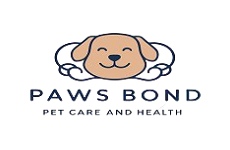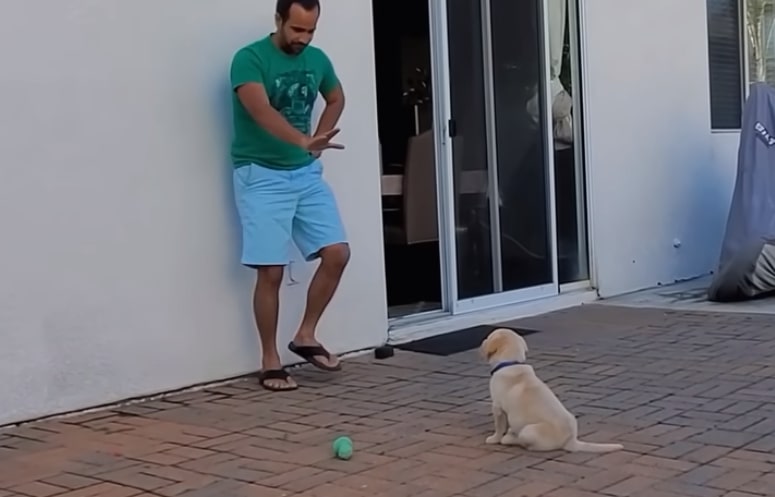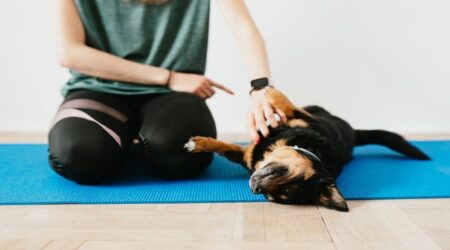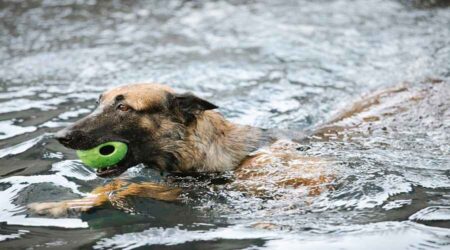Introducing a thorough dog training checklist can offer pet owners a methodical way to encourage desired behaviors in their dogs. A well-mannered dog improves both the owner’s and the pet’s quality of life by fostering a pleasant relationship. This check list functions as a road map, highlighting critical training objectives and methods required to develop in dogs the obedience, socialization, and manners they need. Every item on the checklist, from fundamental commands like sit, stay, and come, to more complex abilities like leash walking and impulse control, is essential to training a well-mannered and well-adjusted dog. The checklist also highlights patience, consistency, and positive reinforcement methods as essential elements of effective training. Through adherence to this methodical process, animal owners can create
Training Schedule for Puppies Aged 8-16 Weeks, Organized Week by Week
Week 1-2: Introduction to Home Environment
Getting acquainted with the environment;
Introducing the crate or designated rest location;
Week 3-4: Socialization and Handling
Careful handling and contact
Contact with many individuals and soft animals
Week 5-6: Basic Commands Introduction
An introduction to fundamental instructions, such as come, sit, and stay
Strategies for positive reinforcement
Week 7-8: Leash Training
An explanation of the collar and leash
Leash-free strolls in secure settings
Week 9-10: Potty Training
Developing a toilet regimen;
Strengthening the proper locations for elimination
Week 11-12: Continued Socialization
Being in different settings and with different sensations
Contact with canines who have received vaccinations
Week 13-14: Advanced Commands
Extending fundamental directives
An introduction to directives such as “drop it” and “leave it”
Week 15-16: Review and Consistency
Go over every command you’ve learnt.
Regularly encouraging desired actions
Why Begin Training at 8 Weeks of Age?
It is important to start training around 8 weeks of age because this is a pivotal period in a puppy’s growth. Puppies are very impressionable and eager to learn at this age, so it’s the best time to begin molding their behavior and establishing positive habits. Puppies that receive early training benefit from excellent socialization experiences, a stronger link with their owners, and assistance adjusting to their new surroundings. Moreover, early training guarantees that pups grow up to be well-mannered and well-adjusted adult dogs and lays the groundwork for lifetime learning. Pet owners can optimize their puppy’s potential and position them for long-term success by starting training from 8 weeks.
Initial Guidance for New Puppy Owners
The Importance of Establishing Training Schedules and Routines
Establishing training schedules and routines is paramount for fostering a well-behaved and disciplined dog. These schedules and routines provide structure and consistency, which are essential for effective learning and behavior modification. By adhering to a set schedule, both the dog and the owner know what to expect, creating a sense of stability and predictability. Consistent training sessions help reinforce desired behaviors while addressing any undesirable ones. Moreover, routines help dogs adapt to their environment, reduce anxiety, and promote mental stimulation. Overall, establishing training schedules and routines lays the foundation for a strong bond between the owner and their dog, leading to a fulfilling and harmonious relationship.
What Elements Should Be Incorporated into My Puppy’s Daily Training Routine?
Housebreaking
Conditioning for Sleep
Conditioning for Alone Time
Playing games like tug-of-war, interactive play,
Chewing exercises, and scent work
Mental stimulation
Exercises for in-home socialization;
Outdoor strolls and socialization excursions
Training Techniques for Raising a Genius Puppy
Positive Reinforcement:
To reinforce desired actions, give sweets, praise, and toys as rewards. Using this technique, the puppy is encouraged to repeat behaviors that yield favorable results..
Clicker Training:
Include a clicker to quickly mark desired behaviors, then follow up with a reward. This method helps to encourage certain behaviors in the puppy and facilitates good communication.
Marker Training:
To communicate desired behaviors, use vocal cues or distinctive sounds, also referred to as markers. Puppies who receive consistent markings are better able to comprehend directions and actions.
Luring:
Use toys or treats as luring devices to help the puppy exhibit desirable behaviors. As the puppy picks up the command, gradually remove the enticement.
Shaping:
Divide difficult behaviors into smaller, more doable steps, and then use reinforcement to progressively mold them into the desired behavior.
Relationship Building:
Establish a solid relationship and trust with the puppy via regular training, socialization, and constructive interactions. This will encourage cooperation and an eagerness to learn..
What Equipment is Required?
Raining Treats:
Premium goodies that can be used as incentives during training sessions to encourage the puppy to pick up and exhibit desired habits.
Training Leash and Collar/Harness:
Tools for teaching walking on a loose leash and for leash training that guarantee outdoor activity safety.
Clicker:
A clicker that allows you to quickly identify desired behaviors in your dog and have productive training sessions.
Training Toys:
During training sessions, use interactive toys like tug, retrieve, and puzzle toys to keep the puppy interested and mentally challenged.
Training Mat or Bed:
A special area set aside for the puppy to unwind in during downtime or training periods, which aids in creating boundaries and encouraging composure.
Training Clicker:
To effectively express desired behaviors and reinforce positive acts, use a training clicker or verbal markers.
Training Books or Resources:
Books, online courses, and videos are examples of educational resources that can help and assist the puppy training process by offering insightful advice and practical training methods.
Cultivating an Exceptional Puppy
Early Socialization:
During the crucial phase of socialization, expose the puppy to a variety of settings, people, and animals (usually 8-16 weeks old). This exposure fosters positive connections, lessens fear, and helps build confidence.
Positive Reinforcement Training:
Use play, praise, and sweets as rewards to promote desirable behaviors. In addition to encouraging a willingness to learn, positive reinforcement helps you and your dog form a deep attachment.
Mental Stimulation:
Give your puppy mentally stimulating toys, puzzle feeders, and training activities. Maintaining mental stimulation is essential to avoiding boredom and directing energy toward constructive endeavors.
Consistent Routine:
Set up a regular routine for training sessions, exercise, toilet breaks, and feeding. Being consistent promotes learning, lowers anxiety, and makes your dog feel safe.
Ongoing Education:
Always be learning new things regarding puppy behavior, development, and training methods. Keep yourself informed on excellent practices to guarantee that you’re giving your expanding puppy.
Frequently Asked Questions
Why is a dog training checklist important?
Outlining the need of approaching training with a defined methodology.
What should be included in a dog training checklist?
Explicitly describing the key elements and training objectives.
How do I use a dog training checklist effectively?
Giving advice on how to use and follow the checklist to ensure effective training results.
How often should I refer to the dog training checklist?
Offering guidance on how frequently to update and evaluate the checklist during the training session.
What if my dog doesn’t progress as expected with the checklist?
Providing advice on resolving typical problems and modifying training methods as necessary.
Can I customize the dog training checklist for my dog’s specific needs?
Examining how the checklist might be made more flexible and adaptive to suit different dog personalities and learning preferences.
Is professional training necessary if I have a dog training checklist?
Talking about the function of certified trainers and the ways in which a checklist might support expert advice.
How long does it typically take to complete a dog training checklist?
Providing information about the length of training and its variability according to breed, age, and prior training experiences, among other factors.
Conclusion
A comprehensive dog training checklist is an invaluable resource for both new and seasoned dog owners. Training can help set clear objectives, monitor progress, and guarantee consistency by following a methodical approach. The checklist promotes the development of desired behaviors and fortifies the link between dogs and their owners by utilizing positive reinforcement strategies, obedience training, and socialization activities. Additionally, the checklist’s adaptability enables adaptation to suit the unique personalities and learning methods of individual dogs. A checklist is a useful tool, but it’s important to keep in mind that training is a continuous process that calls for persistence, commitment, and continuous learning. By adding a dog training check list to your daily regimen and being dedicated to your dog’s development, you can set them up for a lifetime of success and companionship.






